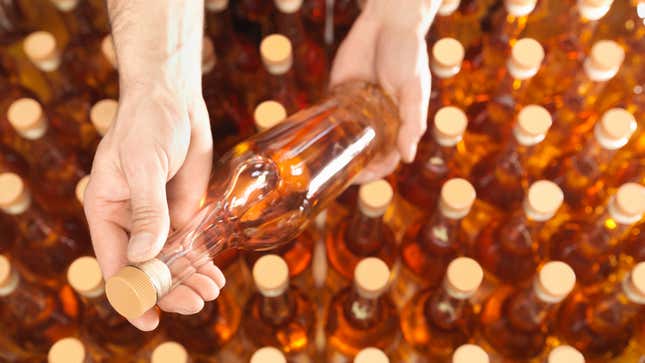
Just about anything is collectible if you have the right audience, and that’s certainly true of whiskey. While some whiskey releases are explicitly designed to be collectible—such as “The GlenDronach Kingsman Edition 1989 Vintage,” which is explicitly tied to the release of the film The King’s Man and has a suggested price of $1,299.00—a goodly proportion are collectible because they are rare or antiques. The problem is that these whiskies are also increasingly subject to counterfeiting, which is hard to prove without actually opening a bottle and taking a sample, something you can’t do if you haven’t already purchased it.
Now, as reported by Jennifer Ouellette at Ars Technica, advances in technology are allowing prospective buyers to confirm their whiskey is the real thing, and a new option allows for this type of confirmation without even having to crack the seal.
According to Ouellette, counterfeiting is actually a surprisingly large problem. She writes, “A 2018 study subjected 55 randomly selected bottles from auctions, private collectors, and retailers to radiocarbon dating and found that 21 of them were either outright fakes or not distilled in the year claimed on the label.” These fakes aren’t limited just to the expensive stuff either, as even cheaper whiskies are being counterfeited. This means that while the stakes are high for whiskey collectors, even a more typical consumer might end up with a fake bottle on their shelf.
The methods for detecting counterfeit juice are varied, and until now have required examining an actual whiskey sample. This using “an artificial tongue” to taste whiskey samples, and leveraging gas chromatography-mass-spectrometry and gas chromatography-olfactometry to conduct analyses of “aroma-active compounds.” But the most promising and novel technique, developed by physicists at the University of St. Andrews in Scotland, uses lasers to examine the contents of an entirely unopened bottle, and that’s the one that’s likely to be of the greatest interest to collectors who don’t want their bottle sampled.
Ouellette’s piece, which provides an informative, impressively concise description of the various technologies being used, is worth a read if you’ve ever considered buying a collectible whiskey for yourself, or have spent $70 on a 1-ounce pour of Pappy Van Winkle and thought, “How do I know this isn’t just Old Grand-Dad?”